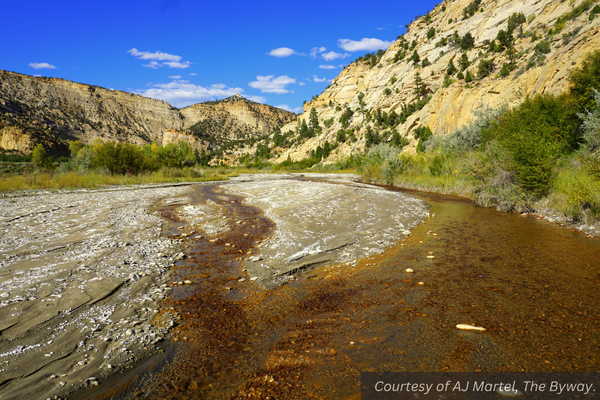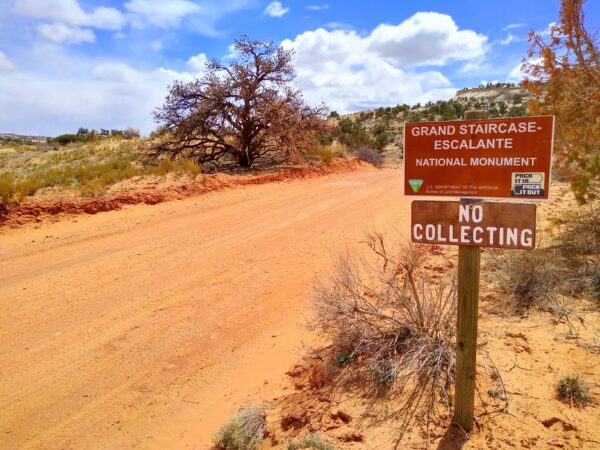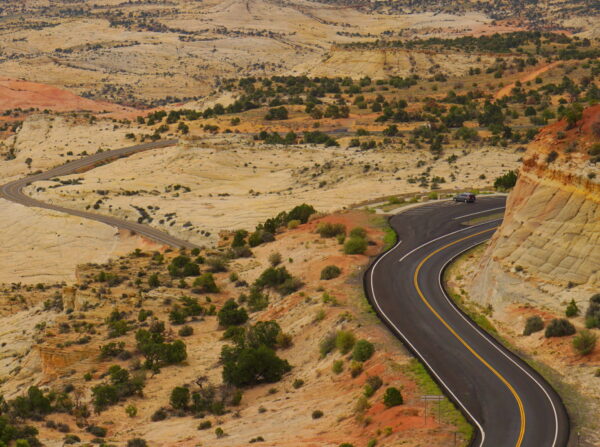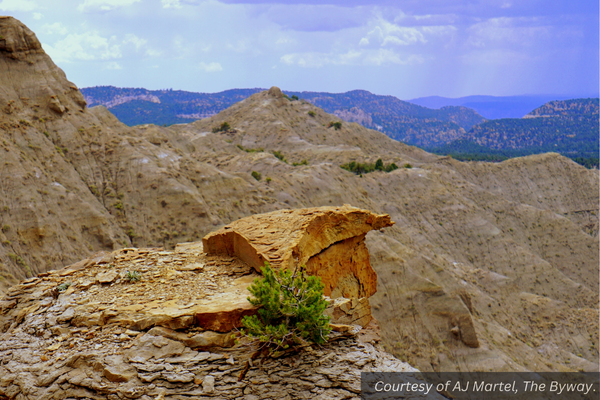On February 4, the Wayne County commissioners passed a resolution to oppose the Antiquities Act of 1906.
Years ago, I was speaking to a Wasatch Front developer friend during one of those developer moments of impassioned dreaming. “And then, we will build a big, outdoor amphitheater at Bryce!” he exclaimed. “We will call it — We’ll call it the Grand Staircase-Escalante Amphitheater!”
“What!? Why?” I asked. “Do you want to get shot?”
As it happened, the only thing that got shot was his amphitheater idea.
For me, there were a couple takeaways from this experience. The first and most obvious was the apparent Wasatch Front perception that there’s no better place to see a play than in an outdoor amphitheater in sunny, sizzling Southern Utah. That’s where Bryce is right? But all I could imagine, as a local, was an amphitheater filled with human popsicles.
The other, more serious problem, is my friend’s romanticized view of the monument (I mean GSENM). At face value, GSENM is absolutely beautiful — except maybe the Kaiparowitz half and its gross Grosvenor Arch (sorry Harriet, I still can’t see the beauty you see there). The area is so beautiful that people from across the globe come to see it. Even I enjoy being here.
There’s hardly anything more grating though, than sitting in the car at the Head of the Rocks scenic overlook and overhearing awestruck tourists exclaim, “Wow! This should be protected!” Really? That’s your first thought? It is already protected, three layers deep! Ok?

At face value it’s beautiful. What’s not to love about GSENM? What visitors don’t realize is that underneath that beauty, the monument was created as a tool to oppress and bludgeon the local people.
Most monuments have “complicated” stories. Just four years ago, protesters demanded statues of Robert E. Lee, a controversial Confederate general, be taken down. Around that time, many other monuments to other complicated historical figures were torn down by Black Lives Matter rioters.
Yet across the world, monuments of oppressive heroes still stand — which may be justified, since their oppression has since ended. But in the case of GSENM and other oversized monuments, it is the actual monument that is a tool of oppression.
When President Bill Clinton established GSENM in 1996, he didn’t care to tell Utah, nor did he come here to sign that proclamation. He didn’t need Utah’s vote. The monument wasn’t for us, it was for someone else.
With one stroke of a pen, Clinton turned management of 1.7 million acres over to the wolves. And by wolves, I’m not talking about the Department of the Interior.
While locals would have loved to have the state manage those lands — they argued they would have done a better job — it was important to environmentalists that GSENM be managed from Washington DC. That belief was affirmed in 2021, when the Biden Administration decided to move BLM headquarters back to DC after Trump had tried to move it to Grand Junction, Colorado.
Keeping land management centralized in DC is important, not to federal bureaucrats per se, but to environmental activists, who would like just one helm to steer the entire ship of their agenda. And you have to admit — it’s really the environmentalists that are driving environmental policies, not the Department of the Interior.

In 2022, the Dobbs decision that overturned Roe v. Wade pushed the abortion fight out of DC, to all 50 states. The move was a huge disruption to pro-choice activists, who previously only had to lobby DC. Now they have to fight in 50 different places. Dobbs divided pro-choice activists 50 ways, and 19 of them were conquered.
Of course, environmentalists don’t want the same thing to happen to them. That is why they fight so hard against Utah’s efforts to manage their own lands.
President Clinton didn’t care about our local people. Environmentalists never did either. They will continue to leverage the Antiquities Act and other environmental legislation to burn out legitimate users of public lands. They are not afraid to steamroll the public’s right to multiple use of public lands, and they will always try to deny public access to those lands.
This could not have been the intended use of the Antiquities Act when it was signed into law in 1906. In Wayne County’s resolution, they point out that the Act was intended to be used in emergency situations, to protect antiquities and a limited amount of adjacent land. They argue that because presidents have since abused such unilateral discretion, the Act should be repealed, or at least amended to take the decision out of the president’s hands.
Congresswomen Celeste Maloy also seeks to address the abuses of the Antiquities Act. Last month she introduced legislation, not to repeal the Act, but to amend it. The bill is quite simple — all it does is remove the power of the president in declaring national monuments, and grants that power to Congress instead.

That seems like a very sensible approach to solving the presidential power grab, but the approach is certainly one the environmentalists will strongly oppose. Because it’s their power that gets transferred back to Congress.
Is there a chance that Maloy’s bill will be adopted by this Republican-controlled government? I don’t think so. Democrats, who are most easily influenced by the environmental lobby, might consider curbing presidential authority if that president is Donald Trump. But I don’t think that they will be so short-sighted (against their long-term agenda) to do so.
Republicans could vote to amend the Antiquities Act, if they even knew what it was. Do you think that a Republican representative from Georgia is going to understand the issue? No way. It’s not their problem, and even they may have been swayed by environmentalists to believe that the taking of Utah public lands is in the best interest of Georgians. That’s too bad.
Ever a pessimist, I’m not holding my breath for such an easy resolution. In the meantime, environmental activists from across the nation will continue to encroach on locals’ existing rights to access these public lands. It will be up to locals to tell Georgians our story. And it will be up to locals to protect this land and the public’s right to access it.
– by AJ Martel
AJ Martel – Escalante
AJ Martel is the youth coordinator at The Byway, but he is involved in most everything. He and his family live in Escalante, and they love it here! AJ has found Utah’s small towns quite inviting and under-defended, which is why he’s so involved with the paper. What AJ loves to do most, though, is serve his community. That is clear through everything he writes and does for Escalante, Utah.

